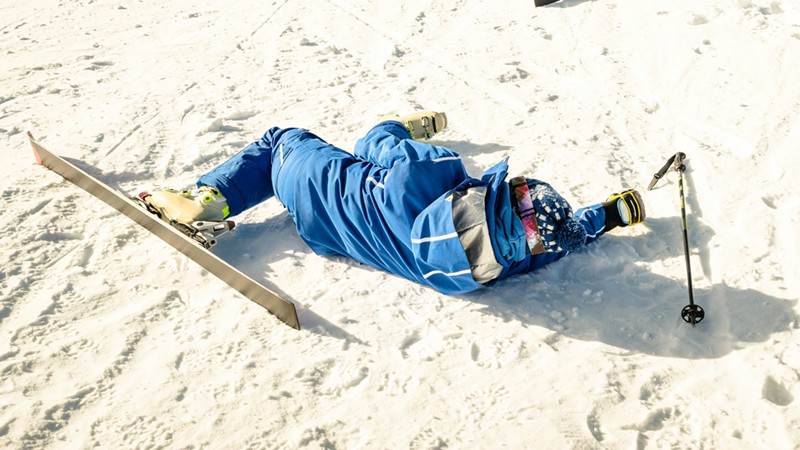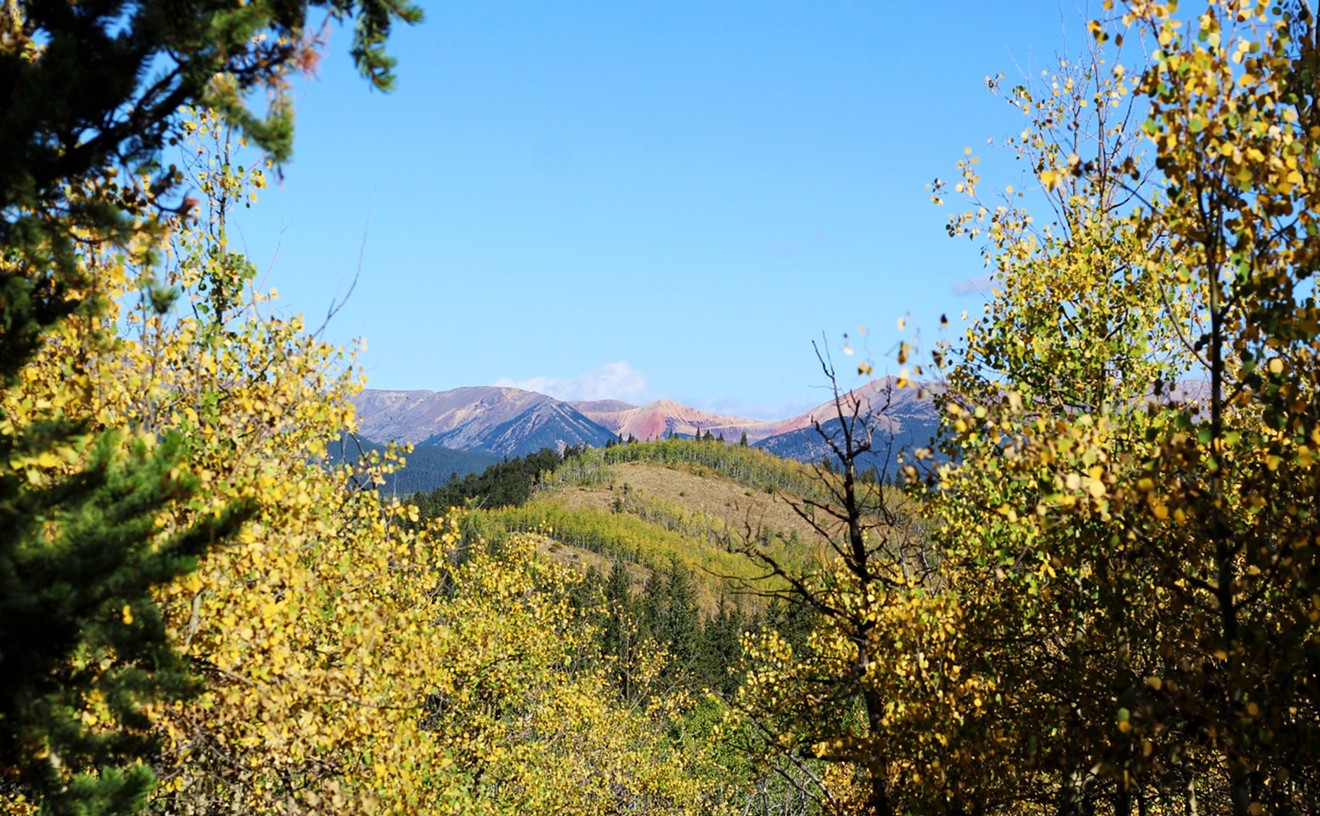According to lawyers for Dr. Teresa Brigance, who was seriously injured by a ski lift at Keystone, a 10th Circuit Court of Appeals ruling against her essentially offers blanket immunity for resorts in regard to anyone hurt or killed at a Colorado ski area even if negligence was the cause.
Attorney Joseph Bloch cites the waiver printed on the ticket Brigance purchased to attend the Keystone Ski School, whose indemnification clause "says, 'Not only can't you sue us if we kill you because of negligence by our employees, but if you sue us, we'll sue you. If we have to defend ourselves against your lawsuit, you're responsible for all our costs,'" he argues.
"Basically," adds Trent Ongert, Bloch's colleague in the firm of Bloch & Chapleau, who also worked on the Brigance case, "it says they're not responsible for anything."
Liz Biebl, director of brand communications for Vail Resorts Management Company, which oversees Keystone, feels very differently about the waivers.
"Colorado’s public policy has routinely enforced agreements that waive or release potential legal claims arising from recreational activities," notes Biebl, corresponding via email. "The 10th Circuit Court of Appeals reaffirmed this principle, applying factors of well-established Colorado law that govern the validity of waiver agreements, finding that Vail Resorts’ waiver agreement is valid and enforceable."
The 10th Circuit Court of Appeals opinion is accessible below. Included are lengthy excerpts from the ski school ticket's waiver text, which is similar to language that appears on lift tickets for all of the properties of Vail Summit Resorts, Inc., Keystone's owner.
One section reads: "I AGREE TO HOLD HARMLESS, RELEASE, INDEMNIFY, AND NOT TO SUE [VSRI] FOR ANY...INJURY OR LOSS TO PARTICIPANT, INCLUDING DEATH, WHICH PARTICIPANT MAY SUFFER, ARISING IN WHOLE OR IN PART OUT OF PARTICIPANT’S PARTICIPATION IN THE ACTIVITY, INCLUDING, BUT NOT LIMITED TO, THOSE CLAIMS BASED ON [VSRI’s] ALLEGED OR ACTUAL NEGLIGENCE...."
Here's how Bloch describes the incident that took place on March 23, 2015, when Brigance, a Florida orthodontist, visited Keystone.
"She was taking a beginner lesson in a group class, and the instructor [Meaghan Humphrey] was not certified, and she hadn't passed the instructor-qualification course to teach," he says. "She was appointed near the end of the winter, and our belief is that a lot of people quit toward the end of the year, and they moved her over from the nursery. She had some training, but not the basic training that's called for in the Keystone employee manual."
After a few rides on a conveyor belt known as a Magic Carpet (the same type of device that Loveland Ski Area employee Adam Lee was working on when he died in a late-December accident), Brigance was taken to a small ski lift on the beginners' slope. Bloch points out that it's an older model fixed-grip lift — meaning that each carrier is attached to a fixed spot on the overhead cable — as opposed to the detachable-grip lifts that are becoming the industry standard. In addition, the lift's seats are very low, about eighteen inches off the ground. Bloch suspects that's because so many children attend the ski school, "but at the appellate court, they kept saying it's an all-ages lift and is within specifications."
Indeed, Vail's Biebl emphasizes that the company disagrees with "unfounded accusations about the safety of this lift. This lift is safe and complies with all industry safety standards. Shortly before this alleged incident, the Colorado Passenger Tramway Safety Board had conducted a routine inspection and did not find safety concerns with the operation of the lift."
At the lift's unloading area, Brigance was told "to stand up and let the chair push you — don't push away from the chair," Bloch continues. "But the chair is very near where the height of her boot was, and the boot got wedged beneath the seat in the unloading area. And instead of stopping the lift when that happened, the lift operator [Brett Carter] slowed it down."
VSRI policy calls for lifts to be stopped if a guest gets in trouble, Bloch allows, "but from testimony, it was very clear that when you stop the lift, it hurts the system. Everything has to stop, including all the pulley systems, and that's difficult for the machinery. And when you stop the lift, guests get more upset, because it delays them."
On top of that, Ongert says, "there's additional documentation that they have to fill out for stopping the lift."
By slowing rather than stopping the lift, however, the operator increased the torque on Brigance's leg, resulting in what Ongert describes as "a comminuted spiral fracture of her femur, which is the biggest bone in the body. It was so bad that she had to have two surgeries — one in Colorado and one when she returned to Florida."
Brigance's medical bills came to $238,399.05, not counting the amount of money she forewent during the two-month period when she wasn't able to practice because of her injury. The lawsuit estimated her past lost income at $134,000 and her projected future lost income at $1,938,664. In Bloch's words, "She's going to have a hard time walking for the rest of her life."
More questions about the lift's safety arose during the process of the lawsuit. For instance, Bloch reveals that "there was an incident a few weeks before where a snowboarder got similarly hurt getting off the lift. But Vail wouldn't give us any information about him. They redacted his name, so we were never able to investigate it further. And their investigation into Dr. Brigance's accident wasn't very thorough, to put it mildly. They never took any photographs," despite emergency personnel being on the scene within minutes.
Not that these claims made much of a difference at trial.
In its opinion, the 10th Circuit quoted frequently from Espinoza v. Arkansas Valley Adventures, LLC, decided in 2016, when Neil Gorsuch, now a U.S. Supreme Court justice, was on the court. In the case, about what is described as "a summer rafting trip gone tragically wrong," the 10th Circuit found that "under Colorado common law, it’s long settled that courts will not give effect to contracts purporting to release claims for intentional, knowing, or reckless misconduct...but claims of negligence are a different matter. Colorado common law does not categorically prohibit the enforcement of contracts seeking to release claims of negligence."
The opinion's last paragraph sums up the ruling with more quotes from Espinoza: "Colorado’s 'relatively permissive public policy toward recreational releases' is one 'that, no doubt, means some losses go uncompensated.' And the Colorado Supreme Court and General Assembly may someday 'prefer a policy that shifts the burden of loss to the service provider, ensuring compensation in cases like this.' But 'that decision is their decision to make, not ours, and their current policy is clear.' As a result...we conclude the Ski School Waiver and Lift Ticket Waiver are enforceable, and accordingly bar Dr. Brigance’s claims."
That was the right call, Vail's Biebl feels. "Vail Resorts is in agreement with the ruling...by the 10th Circuit Court of Appeals and believes this was a thoughtful and well-reasoned decision, consistent with well-settled Colorado law," she maintains.
As for the possible remedies to the current law mentioned by the 10th Circuit, the one pertaining to the General Assembly seems the most unlikely. The current Colorado Ski Safety Act, which became law way back in 1979, mostly limits the duties of ski resorts to tasks such as putting up signage and placing markers near man-made structures that could result in injury. A skier, meanwhile, "expressly accepts and assumes the risk of and all legal responsibility for any injury to person or property resulting from any of the inherent dangers and risks of skiing," the act states.
The Ski Safety Act was last tweaked in 2006, and don't hold your breath waiting for future revisions. In a May 2017 post headlined "Colorado Ski Resort Safety and Why Politicians Aren't Trying to Improve It," we reported that no legislators in Colorado's House or Senate had pushed bills calling for ski areas to share data about injuries and casualties and publish their safety plans." Moreover, zero pieces of ski-safety legislation have been proposed thus far in the very young 2018 session — and if any are, the powerful industry lobby will no doubt make its opinions heard.
That leaves the Colorado Supreme Court, and Ongert hopes the panel will eventually take on the matter.
"The big concern with these waivers is that they get rid of all cases of negligence and premises liability," he stresses. "Colorado has a Premises Liability Act for things like slip-and-fall cases, and when they occur on a property, you just have to show that the defendant didn't act reasonably — that the owner should have known about the dangerous conditions and done something about them. But the waivers get rid of all that. The only cases you can pursue now are ones where you can show reckless disregard — willful and wanton conduct. You'd basically have to show that the lift operator fell asleep."
Ongert adds: "The law is very clear that you can't waive away reckless disregard, even though that's the way the waivers are written. Last year, Joe and I had a case where our client was at Copper Mountain and there were two snowmobiles coming up the hill in the wrong direction. We were able to go forward with that based on reckless disregard. But those cases are the worst of the worst, and in Brigance, we didn't have anything like that. The operator slowed down the lift instead of stopping it, which was basically what he was trained to do, so he wouldn't harm the lift. And even though Dr. Brigance was badly hurt, we couldn't show that the operator's actions qualified as reckless disregard even if they were negligent."
Bloch, for his part, sees legal change as necessary in part because "if you're going to waive your rights regarding the inherent risk of skiing, you need to know what those risks are. Now, all the ski areas have to do is report deaths, but go into Vail Health any given day at one o'clock and it's like a war zone in there: head injuries, broken legs, broken ankles, broken wrists. People are injured all the time, and I believe the ski areas know where and when those injuries are most likely to occur — like, 'If you go on this lift at three o'clock, you have a 90 percent chance of your kid being whacked by a skier.' But they don't want to provide that information to the public, because they think it would discourage people from skiing."
In his view, "People don't really know how dangerous this sport is, in a lot of ways. And Vail doesn't want people to know, because then maybe they'll go to the beach instead of going to the mountains. Ignorance is bliss."
Biebl counters such assertions with the following statement: "The Company continues to place the highest value on the safety of its guests, and as such, complies with all industry safety standards. As with many recreational activities, there are risks involved with skiing and snowboarding."
Click to read the 10th Circuit Court opinion in the case of Teresa Bringance v. Vail Summit Resorts, Inc. Below, see portions of the ski-school-ticket waiver included in the document.
THIS IS A RELEASE OF LIABILITY & WAIVER OF CERTAIN LEGAL RIGHTS.
2. I understand the dangers and risks of the Activity and that the Participant ASSUMES ALL INHERENT DANGERS AND RISKS of the Activity, including those of a "skier" (as may be defined by statute or other applicable law).
3. I expressly acknowledge and assume all additional risks and dangers that may result in...physical injury and/or death above and beyond the inherent dangers and risks of the Activity, including but not limited to: Falling; free skiing; following the direction of an instructor or guide; ...equipment malfunction, failure or damage; improper use or maintenance of equipment; . . . the negligence of Participant, Ski Area employees, an instructor...or others;...lift loading, unloading, and riding; ...I UNDERSTAND THAT THE DESCRIPTION OF THE RISKS IN THIS AGREEMENT IS NOT COMPLETE AND VOLUNTARILY CHOOSE FOR PARTICIPANT TO PARTICIPATE IN AND EXPRESSLY ASSUME ALL RISKS AND DANGERS OF THE ACTIVITY, WHETHER OR NOT DESCRIBED HERE, KNOWN OR UNKNOWN, INHERENT OR OTHERWISE.
4. Participant assumes the responsibility...for reading, understanding and complying with all signage, including instructions on the use of lifts. Participant must have the physical dexterity and knowledge to safely load, ride and unload the lifts....
6. Additionally, in consideration for allowing the Participant to participate in the Activity, I AGREE TO HOLD HARMLESS, RELEASE, INDEMNIFY, AND NOT TO SUE [VSRI] FOR ANY...INJURY OR LOSS TO PARTICIPANT, INCLUDING DEATH, WHICH PARTICIPANT MAY SUFFER, ARISING IN WHOLE OR IN PART OUT OF PARTICIPANT’S PARTICIPATION IN THE ACTIVITY, INCLUDING, BUT NOT LIMITED TO, THOSE CLAIMS BASED ON [VSRI’s] ALLEGED OR ACTUAL NEGLIGENCE....
[
{
"name": "Air - MediumRectangle - Inline Content - Mobile Display Size",
"component": "12017618",
"insertPoint": "2",
"requiredCountToDisplay": "2"
},{
"name": "Editor Picks",
"component": "17242653",
"insertPoint": "4",
"requiredCountToDisplay": "1"
},{
"name": "Inline Links",
"component": "18838239",
"insertPoint": "8th",
"startingPoint": 8,
"requiredCountToDisplay": "7",
"maxInsertions": 25
},{
"name": "Air - MediumRectangle - Combo - Inline Content",
"component": "17261320",
"insertPoint": "8th",
"startingPoint": 8,
"requiredCountToDisplay": "7",
"maxInsertions": 25
},{
"name": "Inline Links",
"component": "18838239",
"insertPoint": "8th",
"startingPoint": 12,
"requiredCountToDisplay": "11",
"maxInsertions": 25
},{
"name": "Air - Leaderboard Tower - Combo - Inline Content",
"component": "17261321",
"insertPoint": "8th",
"startingPoint": 12,
"requiredCountToDisplay": "11",
"maxInsertions": 25
}
]














